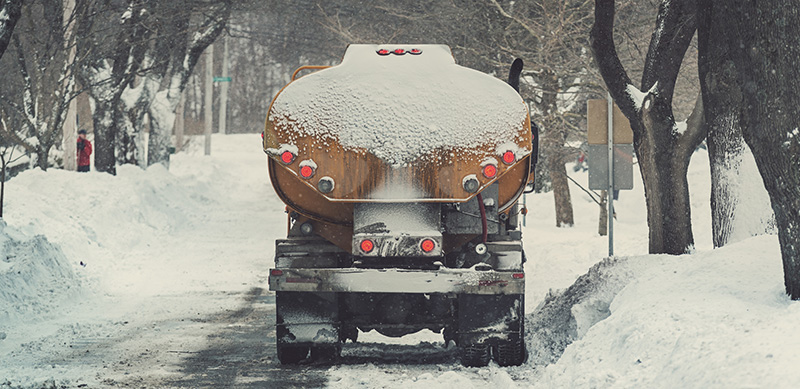Preparation is Key for Utility Fleets this Winter

 Last winter was not lacking in snowstorms, ice storms, or mixed events in many parts of the country. This year, it looks to be more of the same, with colder-than-normal temperatures and above-normal precipitation predicted. While this may be good news for skiers and snowmobilers, utility fleet managers know that winter weather can wreak havoc on their fleets.
Last winter was not lacking in snowstorms, ice storms, or mixed events in many parts of the country. This year, it looks to be more of the same, with colder-than-normal temperatures and above-normal precipitation predicted. While this may be good news for skiers and snowmobilers, utility fleet managers know that winter weather can wreak havoc on their fleets.
It’s imperative that utility fleets keep operating, no matter the weather or road conditions. As such, traveling to and from jobs can be dangerous for crew members. Additionally, snow, high winds, freezing rain, and temperature drops can result in increased idle time, lower tire pressure, and heavier rolling resistance. The impact? Lower fuel economy.
With fall here and winter not too far behind, it’s time for utility fleet managers to winterize their fleet assets before winter weather arrives in full force.
Last November, winter storm Avery brought early-season snowflakes as far south as Louisiana and Mississippi. It even hammered the northeast with up to a foot of snow. Only time will tell if there will be any early winter surprise storms this year. But, surprise or not, following these tips can help keep your utility fleet operations up and running and your crews safe on the job.
Prepare Early
Often, the biggest winter challenge for utility fleets is keeping vehicles and equipment in peak operating condition. As extreme winter conditions arise, no-starts increase, causing a high demand in towing and other related services. Utility service response time increases, due to unfavorable road conditions and the time taken for safety precautions.
Meet challenges head-on by:
- Equipping drivers and technicians with mobile jump packs and personal battery chargers.
- Installing block heaters on all trucks, which help keep the engine warm and lubricants flowing — they’re especially important for diesel trucks.
- Changing winter tires out before they are worn down to 5/32 of an inch.
- Stocking up on supplies early, before they are in demand and in short supply. Such supplies include anti-freeze, wiper fluid and wipers, batteries, winter gear for the crew, and portable salt containers so that the crew can safely exit trucks when there’s ice on the ground
- Inspecting non-skid surfaces to make sure they provide proper protection from slippage.
Leverage Technology
Potentially dangerous weather and hazardous road conditions can make dispatching jobs, crew safety, and keeping tabs on trucks a challenge for utility fleet managers. Fleet management technology can help meet these challenges by providing insight into these areas. Here’s how:
- Vehicle Maintenance
Technology that tracks vehicle maintenance indicators can provide peace of mind by ensuring trucks are road and job-ready before winter conditions set in. For example, monitoring fuel usage and mileage can indicate how long a truck has been in service. Some technology also includes maintenance alerts, indicating when maintenance is needed, so immediate action can be taken. - Driving Behavior
Winter weather conditions can change on a dime. Having technology already in place to assess the driving strengths and weaknesses of individual crew members gives utility fleet managers an opportunity to provide individualized coaching, where needed — before the winter season begins. This technology can monitor harsh braking and acceleration, speeding, seat belt utilization, excessive idling, and other behaviors that can be dangerous (especially in winter) and which also lower fuel economy. - Tracking/Routing
GPS tracking software provides utility fleet managers with a measure of control over ever-changing road conditions that occur in wintertime. This software offers real-time status and location of trucks, helping dispatchers optimize routes for quicker and more efficient response times, while also ensuring the safety of crew members
Prepare for the Worst
No matter how extreme weather conditions become, utility fleets must be on the job. To assess how your operations would measure up in the most extreme conditions, here are some additional areas to consider.
- The ability to provide emergency shift work
- The equipment and crew needed to service peak demand
- How you fared in previous emergencies and if adjustments were made where needed
- Availability of emergency service providers if demand outweighs your capacity
- A plan for fueling trucks during an outage and an after-hours contact for parts